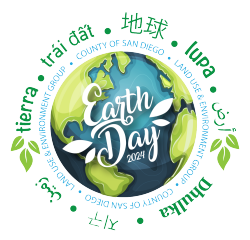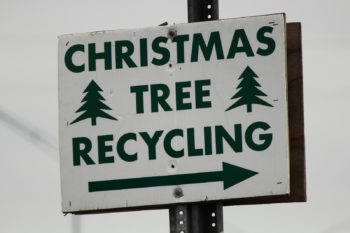Learn
On this page, you'll find out how to reduce your environmental impact, prevent mosquito breeding, and search for invasive pests in and around your home. Test your knowledge by taking one of our fun quizzes! Select the topic you want to learn about first by clicking the icons below. Happy learning!

How can I reduce my environmental impact?
Recycle RIGHT! Learn how and what to recycle in the blue bins at your home by checking out these resources.
Think Reuse, Repair & Donation Before Recycling
Are you decluttering or simply wanting to give your stuff a second life? Consider donating your working, usable goods to a non-profit, neighbors, or through a host of other outlets. Potential options include NextDoor, Facebook Marketplace, Buy Nothing Groups, FreeCycle, and more. Have something that is broken? Find a local repair option or donation site using the free database at WasteFreeSD.org. To learn more visit R1Earth.org.
Pop Quiz: Are You Doing Enough to Avoid Lithium-Ion Battery Fires?
Find out


In the Hazardous Materials Division, every day is Earth Day!
Household hazardous waste (HHW) is the unused or leftover portion of
any hazardous chemicals or materials. Any leftover household product
that is labeled DANGER, WARNING, TOXIC, CAUTION, POISON, FLAMMABLE,
CORROSIVE, or REACTIVE is considered a household hazardous
waste.
Examples of HHW include aerosol cans, automotive
fluids, batteries, e-waste, fertilizers, fluorescent lights, household
cleaners, used motor oil & oil filters, paints and stains,
pesticides, pool chemicals, propane, solvents, etc. HHW cannot
be placed in the trash and must be managed separately. For details on
how and where to properly dispose HHW, please visit:
https://www.sandiegocounty.gov/content/sdc/dpw/recycling/hhw.html
or call the County’s Recycling and Household Hazardous Waste Hotline
at
1-877-R-1-EARTH or (1-877-713-2784).
The Right Way to Recycle-Empty, Dry & Loose
Did you know there’s actually a right way to recycle? It’s easy! To Recycle Right remember this helpful tip-keep all accepted materials Empty, Dry and Loose (DO NOT bag your recyclables). For the most, in the San Diego region, recyclables fall into 4 categories: Paper, cardboard and cartons, plastic bottles and containers, glass bottles and jars, and aluminum and metal cans and foil. Now you know how to Recycle Right! Learn more.
Reducing Food Waste: It's the Law

Where does food come from? How does it get to our table? What happens to food waste? Learn how to reduce wasted food at home and prevent wasted food from reaching landfills!
Did you know that 40% of the food produced in the US is wasted? Here are some tips to help you reduce this number. Shopping with a list can be useful in reducing impulse purchases or buying more than you need. Shop your fridge first. You may be surprised what you bought last week and forgot about. Freeze foods that may spoil quickly for use in a later meal. Learn how to store fruits and vegetables properly. By following these guidelines you’ll save money (due to less wasted food), reduce your overall waste, and help ensure all of the transportation, fuel, labor, water, and other resources that went into growing that food isn’t wasted either. To learn more visit R1Earth.org.
What is composting and why should I do it? Composting can be practiced anywhere... in your backyard, at work or school, even in an apartment! Learn more about how and why you should compost!
Compost-Nature’s Way of Recycling
An easy and fun way to reduce what you throw into the trash is to start composting. Simply take your “green” nitrogen-rich items like fruit and vegetable scraps, eggshells, coffee grounds, and tea bags, mix them with your “Brown” carbon-rich items like dried leaves, wood chips, straw, and/or shredded paper, add water and mix it all together. In as little as a few months, you’ll have a beautiful, rich soil amendment in the form of compost. Compost is able to hold more water, is loaded with beneficial nutrients and microorganisms, and reduces or eliminates the need for chemical fertilizers. The County of San Diego offers discounted compost bins to unincorporated residents year-round. To learn more visit R1Earth.org.




How Does Climate Change Affect You?
Recently, San Diego County has experienced recordbreakingheat and
extended periods of drought, leadingto tree deaths, more intense
wildfires, strain on local farmers,and higher food prices. If you have
asthma or are sensitive topoor air quality, increased wildfires could
mean less time spentoutside. For our already vulnerable populations
like childrenand older adults, intense heat could result in a range of
effects,from dehydration to heat strokes. Get involved

What is Carbon Farming?
The County of San Diego Planning & Development Services is
developing a Pilot Carbon Farming Program to help avoid andreduce
greenhouse gas emissions through carbon farmingefforts in the
unincorporated county.
Did you know that you can help protect San Diego’s water quality by using water more efficiently? By preventing over-irrigation and unnecessary outdoor water use, you can help to prevent polluted water runoff from entering our stormwater conveyances and waterways.
Rain Barrels
Storing rain on your property is a great way to help yourself and the
earth at the same time. When you harvest and reuse your rainwater for
irrigation, you can keep your outdoor space looking fantastic — and
save money doing it. Learn more about the benefits of rain barrels and
how you can apply for a rebate at our website. If you’d like to learn more from about
how to install and maintain your rain barrel or cistern, view our new
rain barrel video below.

How can you help? Take small actions to reduce stormwater pollution!
1. Prevent Runoff - especially during the rainy season
2. Decrease Trash and Pet Waste
3. Capture Water
Turf Replacement

Turf Replacement One way to reduce water use, protect the
environment, and beautify your landscape is by removing unused areas
of turf grass. San Diego-appropriate plants can reduce water use by
70-80% compared to turf grass. The County offers educational and
financial support to residents wanting to make this change on their
properties. Check out this video about a large landscape project recently
completed at Rancho San Diego HOA. Then go to our website to learn how you can do this too.
Water Protection Resources
Have you ever wondered how you can report stormwater pollution? Or what to do with leftover paint from a big project? Looked for watershed resources for school-aged children? You can find all that and so much more at the County’s Watershed Protection website. We’ve developed numerous flyers in several languages (including Spanish, Arabic, Chinese, Tagalog, and Vietnamese) to help spread the word about watershed health and protection.
Pesticides
Pest detector works like a dog
Our Agriculture, Weights and Measures' canine colleagues have four legs, the best sense of smell, and even their own calendar!
Traps in residents' yards help County watch for invasive pests
Insect detection specialists for County Agriculture, Weights and Measures help guard the region against potentially devastating pests. They vigilantly set and check traps for many insects, including Gypsy moths and Japanese beetles in the summer months.
Prevent Mosquito Breeding
Dumping outstanding water is essential to preventing mosquitoes and mosquito-borne illnesses. Mosquitoes can lay their eggs in as little as 1/4" of standing water. Some mosquitoes will even lay their eggs in water inside homes! Learn more about how to prevent mosquito breeding in and around your home.





























